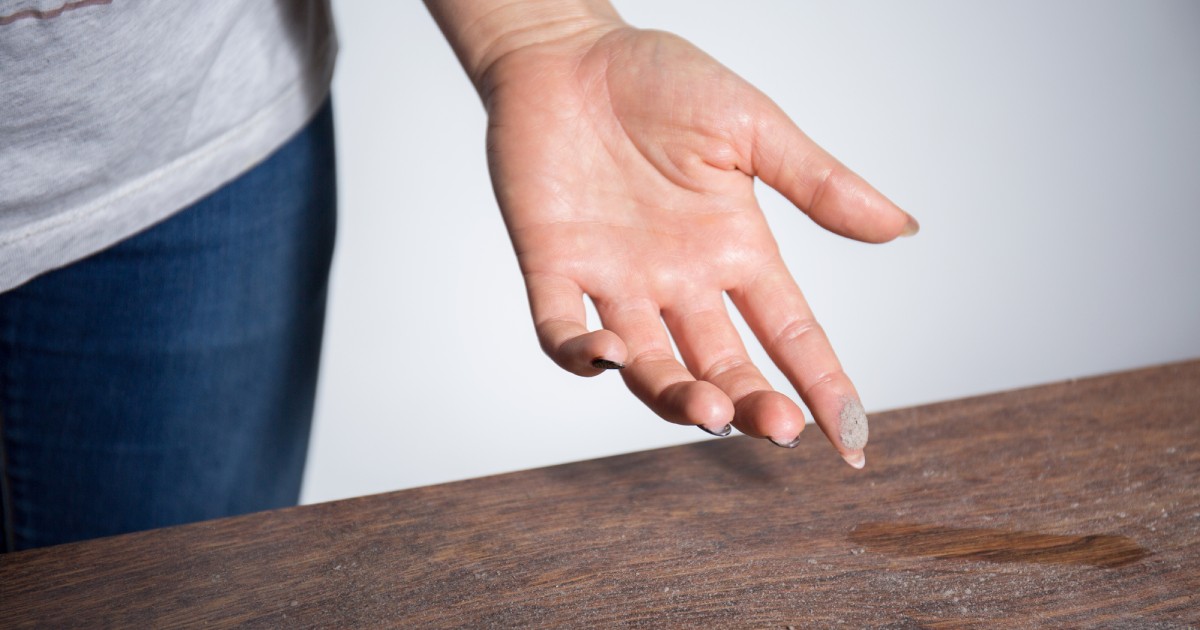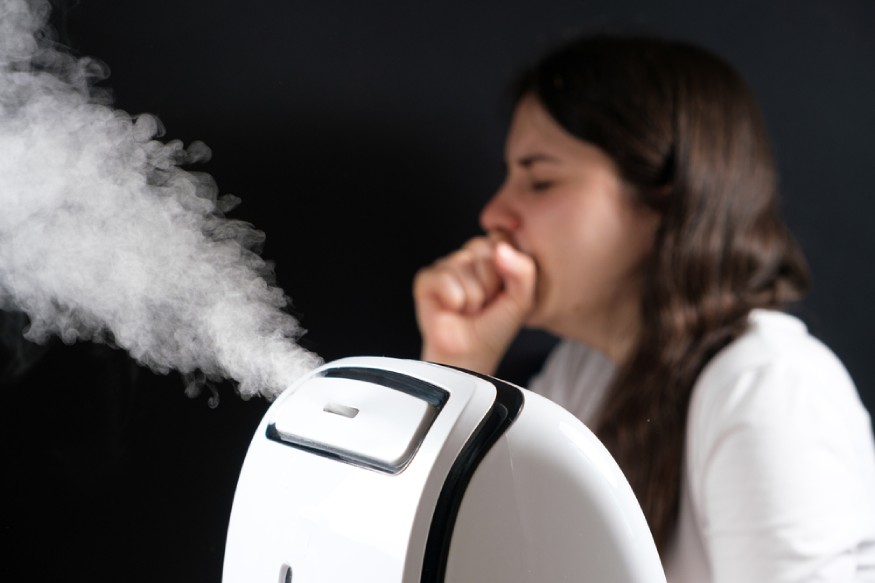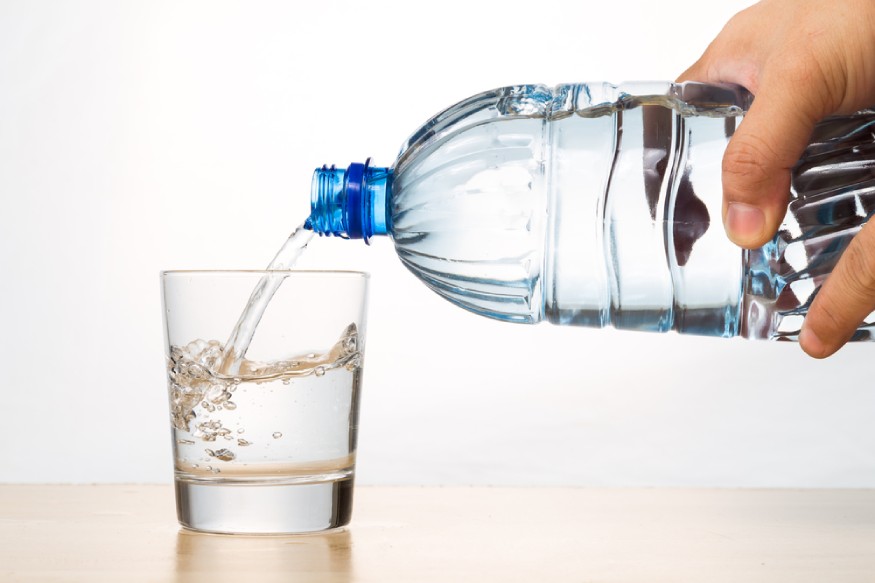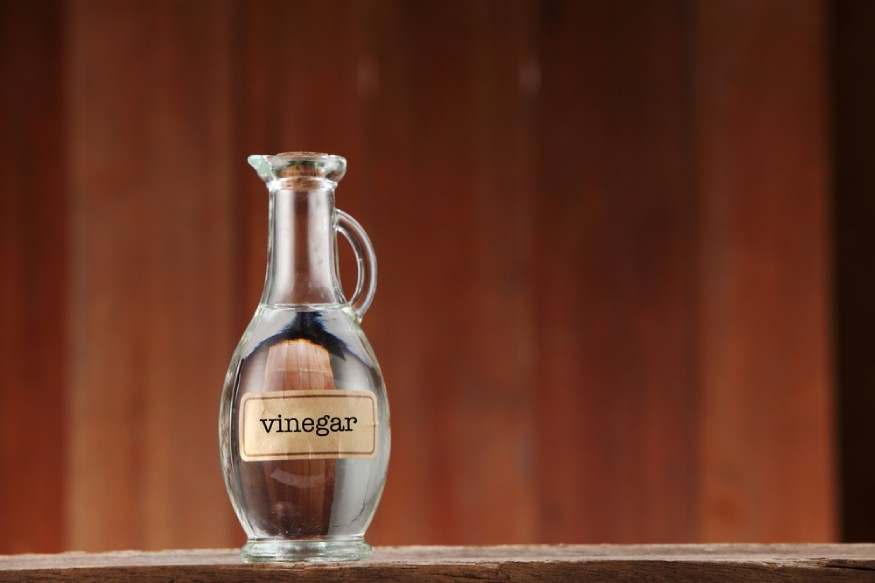If your humidifier is putting out white dust along with water vapor, you have a bigger problem than just dirty surfaces. That white powder could be negatively affecting your health.
Humidifier white dust is caused by minerals in the water being aerosolized into the air. Not only is this dust unsightly but it can get into your lungs and make you sick. Luckily, you can fix this issue simply by switching to distilled water.
Below, we’ll take a closer look at how humidifier dust is created and why it’s not something to ignore. Plus, we’ll explain why distilled water is the best kind to use in your humidifier and what other options are safest in a pinch. And finally, we’ll show you how to descale your unit to remove any mineral residue to assure it is safe and ready to use.

Why Is My Humidifier Leaving White Dust?
The white dust coming out of your humidifier is something known as mineral dust or mineral scale. Ultrasonic humidifiers create this white powder by propelling not just water vapor into the air, but minerals along with it.
If the water you’re using in your humidifier contains minerals, then you will have a problem with mineral dust. But this problem goes beyond white powder covering the surfaces of your home. Aerosolized minerals can be breathed in by humans and pets and cause dangerous health problems.
Is Humidifier Dust Harmful?

Humidifiers have many uses that support health, but when they expel mineral dust, they can actually do more harm than good.
The most common minerals in tap water are calcium and magnesium. Both of these react with other compounds in the water to create limescale, which you will find on your faucets and plumbing if you have a hard water problem.
When these minerals are aerosolized and breathed in, they have a high potential for irritating the lungs and causing inflammation. With repeat exposure, it can lead to chronic respiratory disease.
Some municipal water sources and most well sources also have trace amounts of silica, lead, and other harmful minerals that are known to cause damage to the body. Developmental problems, toxicity, and inflammation of the lungs and organs can result if humans, especially children, are exposed to these minerals.
In addition to minerals, ultrasonic humidifiers also have the potential to aerosolize pathogens and mold.
Just as an overly humid bathroom can cause mold growth that leads to health problems, so can the spread of mold spores via humidifier vapor. Viruses and bacteria that are aerosolized by humidifiers can also cause diseases, including pneumonia and urinary tract infections.
How to Stop Your Humidifier from Putting Out Mineral Dust

Humidifier powder is created by minerals in the water, so it makes perfect sense that the only way to get rid of this problem is to use water that doesn’t contain minerals. The only mineral-free water available is distilled water.
Distilled water is made by boiling water and capturing the steam that’s released. Unlike the vapor created during ultrasonic aerosolization, this steam is made up of 100% pure water molecules.
This pure water is captured and bottled using sanitized equipment that prevents the introduction of pathogens and other contaminants.
Using only distilled water in your humidifier assures no minerals or pathogens are aerosolized during use. This prevents white dust from forming and makes your humidifier much safer.
The Best (and Worst) Water for Humidifiers
If you happen to be out of distilled water and need to put a different type of water into your humidifier, you do have some options. Though, spoiler alert, none of them are as good as distilled water.
This table outlines the best and worst water types to use in a humidifier.
| Type | Produced By | Mineral Content | Concerns | Recommendation |
|---|---|---|---|---|
| Distilled | Capturing pure water via steam | None | None | Highly recommended |
| Filtered Water | Filtering tap water through carbon | Low | Likely to contain viruses and bacteria in addition to a small amount of minerals | Recommended if distilled water isn’t available |
| Boiled Water | Exposing tap water to high heat | High | While free from viable pathogens, boiled water contains higher concentrations of minerals than tap water | Not recommended |
| Bottled Water | Capturing tap, spring, or surface water with or without added filtration | Medium | Bottled water often has just as many minerals in it as tap water and can contain similar pathogen loads | Not recommended |
| Tap Water | From a municipal water source or well | Medium to high | Can contain a range of minerals and mineral concentrations and is highly likely to contain pathogens. | Not recommended |
If you have a dehumidifier, you may be wondering if it is safe to use the water from your dehumidifier in your humidifier.
While the evaporate created during the dehumidifying process is technically pure water, these droplets come into contact with a number of surfaces before entering the reservoir. This means it is highly likely that pathogens, mold, and even some minerals will be introduced into the water.
For this reason, dehumidifier water is not recommended for use in a humidifier. Though, if you were in a pinch and kept an impressively clean dehumidifier, this wouldn’t be the worst choice.
To learn more about the risks and benefits associated with different types of water, check out our article on the best type of water for humidifiers.
How to Make Distilled Water at Home
If the prospect of buying distilled water for your humidifier is too much, you always have the option of making distilled water at home. While this process is simple and inexpensive, it does not produce a lot of volume at once.
Step 1: Fill a large pot halfway with tap water.
Step 2: Place a sanitized metal dish on top of the water.
Step 3: Invert a sanitized large curved lid on top of the pot.
Step 4: Heat the water to boiling.
Step 5: Leave the pot on high heat until most of the water has evaporated and collected in the bowl.
Step 6: Allow everything to cool.
Step 7: Remove the bowl and pour the water into a sanitized bottle for storage.
Note: It is important to sanitize the inside surface of the bowl, lid, and bottle by boiling them in water for 5 minutes first. This will assure no viable pathogens are introduced into your pure, distilled water as the steam is collected.
To see this process in action, check out the video below.
How to Descale Your Humidifier

If you’ve been using the wrong kind of water in your humidifier, then it will be necessary to descale the unit before you can start using it again safely.
Limescale and mineral scale accumulate on surfaces when calcium and other minerals in the water react to form hard deposits. These deposits will continue to introduce minerals into your water if left inside your humidifier.
Luckily, removing them is fairly simple using the following steps.
Step 1: Unplug your humidifier and remove the reservoir from the base.
Step 2: Fill the base with vinegar until the entire inside surface is submerged. Allow it to sit for 10 to 20 minutes.
Step 3: Fill the reservoir with 1 to 2 cups of vinegar (add water to dilute up to 1:1 for large reservoirs) and swish the liquid around until all surfaces are covered. Repeat the swishing action multiple times over the course of 10 to 20 minutes.
Step 4: Pour the liquid out of the base and reservoir.
Step 5: Scrub all water-contact surfaces you can reach with a toothbrush or sponge.
Step 6: Rinse all water-contact surfaces with distilled water and set the reservoir and base to dry.
While vinegar works very well for this purpose, you can also use a commercial descaler or diluted chlorine bleach.
To see this cleaning process in more detail, check out the video below.
Stay Safe While Using Your Humidifier
By using only distilled water in your humidifier, you can completely avoid problems with white dust. And, more importantly, you can help assure your humidifier is supporting the health of you and your family rather than negatively impacting it.
If you have been using the wrong water in your unit, don’t forget to descale it using vinegar or a commercial descaler.
Have questions about humidifier dust or how to run your unit safely? Post them below!
I have an Amana wall mounted steam humidifier that is connected to the furnace. It uses tap water but goes through a filter unit. Should I be concerned? This humidifier coat over a thousand bucks.
Are you saying it is leaving a residue on surfaces?